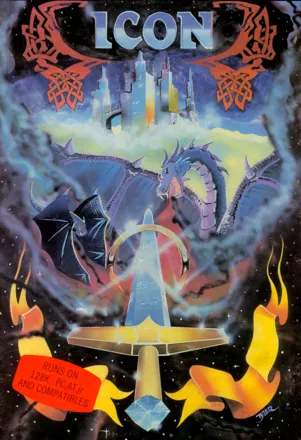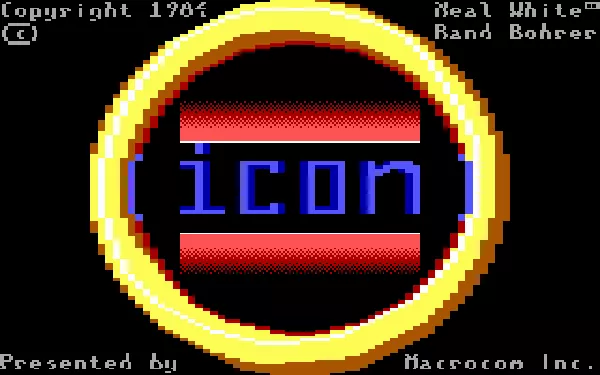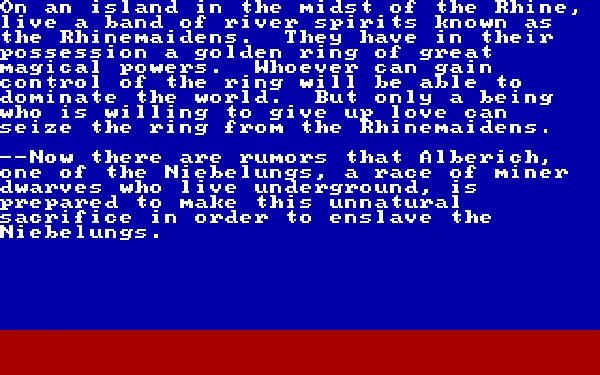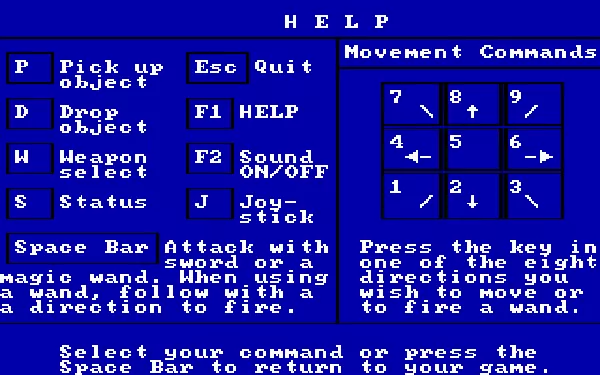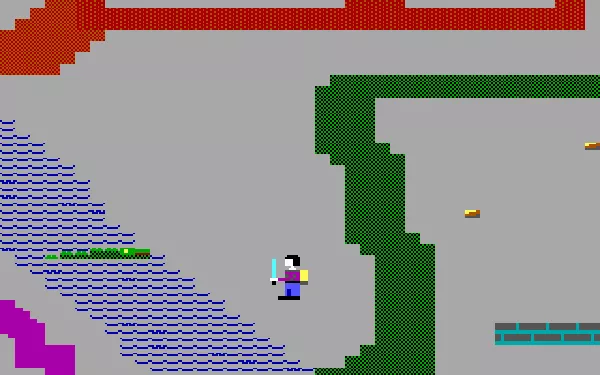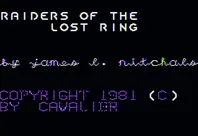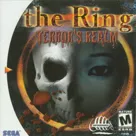Icon: Quest for the Ring
Description official description
Beautiful maidens live in the river Rhine, protecting the gold that lies there. It is said that the owner of this gold will learn secrets of immense power. But in order to possess the gold, the person has to renounce love completely. Years have passed, and nobody dared make such a sacrifice. But finally, a dwarf named Alberich decided that power was worth more to him than love. He took control of the gold, and became a dark ruler of evil creatures. Will a hero ever rise, brave enough to stop the madness?..
Based on the popular Ring of the Nibelungen story (itself based on tales from the Norse mythology), ICON: Quest for the Ring is a "dungeon crawler" along the lines of Temple of Apshai, but with fully action-based combat, making it to one of the earliest action RPGs. The player navigates the hero through top-down environments heavily populated by hostile creatures. Standing near the enemy and pressing the attack button will make the protagonist swing the equipped melee weapon; ranged attacks require an additional directional key to execute. As the player progresses, defeating enemies on the way, the protagonist gains levels and becomes stronger. Various weapons and other items are scattered around the dungeons; the hero equips a weapon automatically when he finds it.
Groups +
Screenshots
Credits (DOS version)
16 People (9 developers, 7 thanks)
| Producer | |
| Programming | |
| Art Work | |
| Special Assistance | |
| Many Thanks To |
Reviews
Players
Average score: 3.1 out of 5 (based on 7 ratings with 2 reviews)
A true interactive story, not just a colourful game
The Good
Having played through this game a few times, it's become a real standout, not for the unique graphics, but for the story, which is unlike any other game story I've seen. So the future is set in stone and you sort of have to play along. Part of your character, the dark haired Sigmund's fate is death in battle so you actually have to die to get to the next stage, where you resume the game as Sigmund's blonde haired son, Siegfried (the game of course uses characters and tales from Norse mythology). So the game presents the idea that death is not necessarily failure, while of course death IS failure in the vast majority of games.
The game's story, continued at the beginning of each stage, is brief, but very well written, with twists and turns and contains some interesting morals, different from the norm. There is one twist in particular where your hero character is exposed as not quite so heroic after all. The last stage of the story, printed after you complete the game, has an interesting message about the natural balance between things and traits a hero needs to be an instrument of law and justice. It's not really like Ultima IV, which came after this game, and its quest for avatarhood, more like a "quest for balance".
Ok so the gameplay is a factor too, the story alone doesn't make the game great. The graphics and gameplay are simple, but all that's really required I think. Playing in standard mode, the game isn't frustratingly difficult. There are some challenging puzzles where you have to sort of act out the game's story and defeating Fafner the dragon is tough, but these things help distinguish the game and make it better than average.
The Bad
Well I'll complain that in advanced mode, the game becomes near impossible, with so many ghosts coming through the walls at you. Other than that, just about everything is acceptable. I can't really think of anything I'd want to change.
The Bottom Line
Well the graphics have the simplicity of RPG games of the time, but of course it's real-time, arcade action. But I think the story is what makes this game great and I think RPGs of then were a bit of a case of, you write or imagine your own story for the game. The game is very much an early, quite primitive, interactive story, but one that works.
If you wish to see my complete playthrough of the game, search for icon quest andrewzealand on Youtube.
DOS · by Andrew Fisher (697) · 2018
The Good
No PC game has been more defined by hardware than this game. This game only exists because IBM's Color/Graphics Display Adapter (the CGA) was limited in the number of colors it could show on the screen. It could display a maximum of four colors in a graphics mode and the programmer couldn't select the colors. By comparison, the Commodore 64 allowed the programmer to use sixteen colors.
But some programmers sought to break this limitation, which was especially galling considering the CGA cost as much as an entire Commodore 64 computer! How they did it is documented in an excellent article on MobyGames. The amount of effort to get the graphics as good as they are must have been rather epic (suiting the subject matter of the game.)
These graphics have to be seen to be believed. They are blocky and strange, but that adds to their appeal. While the technique used was not unique to the programmers, unlike their competitors, these folks actually use the whole character set instead of just the half-left or right bar.
On the good side, you character can heal automatically and most enemies drop health-restoring mushrooms. You can save your game too. The setting, taken from Wagner's Ring, lends a sophisticated air to the game that could have resonated with the potential market (people who bought IBM PCs were not poor.)
The best thing about this game is that it was developed for a PC, which in its time period (1984), was rather unique. It was not a hand-me-down port from the Atari 800, the Commodore 64 or Apple IIe that game showed what a PC could do. It is a shame that the technique was not used in many more PC games.
The Bad
Gameplay wise, this game seems like a watered down version of Temple of Apshai. Your character can use either a sword or a magic wand to kill his enemies. There only seems to be four enemies, Kobolds, Alligators, Rats and Bats. Hit detection is poor and enemies can quickly overwhelm you. Until you figure out how to avoid being drowned in the river, drowning seems arbitrary.
Unfortunately, while the graphics are revolutionary, the sound is truly basic. A decent rendition of Wagner's Ride of the Valkyries is played at the opening, but its beeps and boops for the rest of the game.
This game was designed for the IBM PC with a CGA card or an IBM PCjr. If you don't have that hardware or something truly compatible, good luck getting this game to work.
The Bottom Line
Little more than a technology demo marketed as a game, but the achievement itself was almost worth the price.
DOS · by Great Hierophant (559) · 2006
Discussion
| Subject | By | Date |
|---|---|---|
| Month of release | Andrew Fisher (697) | Mar 8, 2023 |
Trivia
Development
Appears to have been written in Pascal ("Pascal MT+").
Graphics
ICON: Quest for the Ring was one of the very few PC games to use a tweaked 40-column text mode to paint "graphics" with a surprising amount of detail, no doubt inspired by the Commodore 64's "character graphics". It was achieved by changing the character cell height from the normal 8 lines down to only two; the result was an effective resolution of "320x200x16" with the obvious color limitations per character cell.
Check out the screenshots for examples of the advantages (and slight drawbacks) of this unique video mode.
Hidden messages
Interesting messages found in the game executables and overlays:
`Game save file is corrupt - please do not try to edit game files. The file has been deleted for your protection; please start over.
This is an illegal copy of ICON. You should be ashamed of yourself!`
Reception
Taken from MobyGames' featured article on Macrocom:
MobyGames: Was ICON a financial success?
Neal White III: No, but it provided enough income to finance the development of 7 Spirits. :-)
Rand E. Bohrer: But the game was a tremendous success in JAPAN, just not a financial success. Some engineer over there broke our copy protecion. Because the game used special modes, it became popular as a "test" to see if their clone graphics boards were truly compatble. So engineers were our "marketing force" in Japan. Apparently they gave copies out all over the place. Imagine our surprise when we went to Comdex and saw about 2/3 the of the Japanese and Taiwanese graphic board manufacturers using ICON as a demo to show how "superior" the color and animation capabilities of their boards were. We asked some floor rep, a Matsushita engineer I think, if he knew anything about the program, "Ohh, Icon Quest, most popular PC game in Japan, everyone copy it!" Then when he found out we made it, he ran around to other booths, bringing all these Japanese engineers and salesmen to meet us. So that was our 15 minutes of fame.
Information also contributed by Brolin Empey
Analytics
Upgrade to MobyPro to view research rankings!
Related Sites +
-
Life Before Demos
Mostly about other old PC stuff, but has a short section that mentions ICON, and includes the ICON demo that you can run on your own classic PC.
Identifiers +
Contribute
Are you familiar with this game? Help document and preserve this entry in video game history! If your contribution is approved, you will earn points and be credited as a contributor.
Contributors to this Entry
Game added by Trixter.
Additional contributors: formercontrib, Patrick Bregger.
Game added July 31, 1999. Last modified February 22, 2023.
